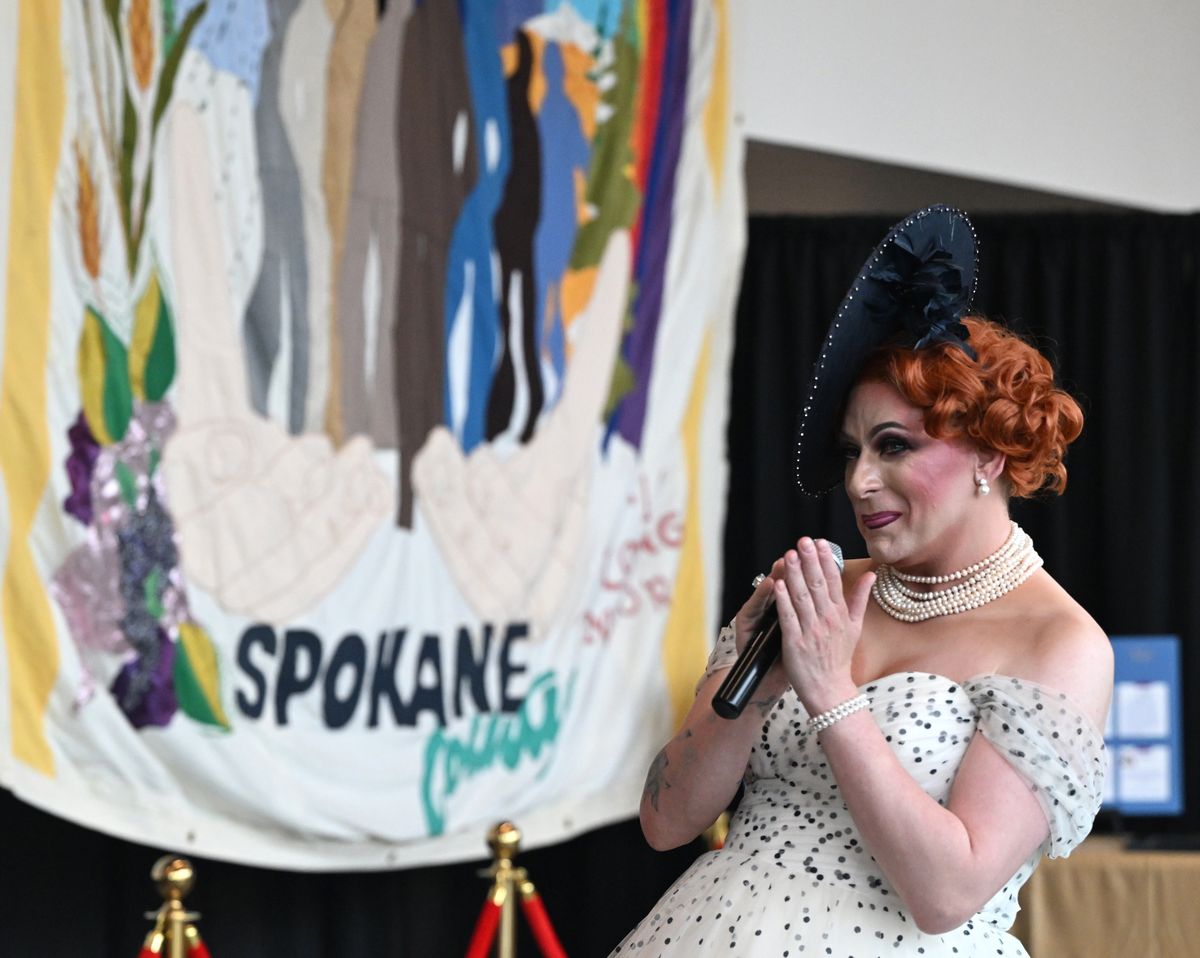Pride history project opens at the Pavilion

When Bethany Laird delved into LGBTQ+ history in Spokane for a Pride History and Remembrance Project, she was uncertain what she would find.
“One of my goals was to look at individual stories, but then also zoom out and look at the whole breadth of history and Spokane,” Laird said.
“There really is no start and there’s no end, so we’re on this continuum.”
The remembrance project, held at the Pavilion, showcases the history and a timeline dating back to the 1800s and beyond through this year. It is open to the public in the days leading to Spokane’s Pride Parade on Saturday.
Laird said the Pride History and Remembrance Project is a five-day history exhibit of LGBTQ+ history in the Inland Northwest with the purpose to celebrate and preserve the history and contributions people in the LGBTQ+ community have made in Spokane and the Inland Northwest.
“We hope to educate residents of Spokane about the rich history of LGBTQ+ people in Spokane and promote understanding, empathy and inclusivity and ultimately inspire future generations of queer activists, scholars and community leaders by showcasing the resilience, creativity and achievements of those who have come before them,” Laird said.
Head curator Crystal Marché, who has been a drag queen for 24 years, came up with the idea for a remembrance project during the pandemic.
She wondered who was going to remember her and fellow drag queens before realizing she could be the one to tell queer stories.
Marché said she wanted to make sure to show the community that queer history and stories are not always tragic and sad.
“We must remember the AIDS epidemic and crisis of our country. All of these things represent that vibrant history that we really did have,” she said. “Spokane has always been queer. … We’ve always been here and I think that we’re trying to show that as well.”
Laird sees the project as a function of mental health for the queer community because she struggled with depression and wondered if there was a spot for her in the world and what life would look like growing older as a queer person.
“I think doing this project has really healed a lot of my depression in a lot of ways because it’s given me insight into how people did it in the past and it helps me know that this is not new,” Laird said. “Queer people aren’t new to Spokane, so we get to be here, and we get to celebrate and fight for our rights.”
Community member LaDonna Arehart, 70, came out when she was 18.
Arehart said people have become more accepting, though, and she has only seen two major incidents when celebrating Pride where the community had been targeted.
She has always been comfortable in her identity, but she is distanced from some of her family because of it.
She feels sorry for her grandchildren because they won’t get to know the part of her family from which she has lost ties.
Arehart said it was tough being in the queer community in the 1970s. Gay men would be targeted the most, but the community would defend each other .
“People were very anti-us, like we were going to hurt somebody or something, not realizing that we were actually just people,” she said.
Marché said when working on the project, it came from her heart.
“It’s my love letter to our community and it comes from a place where I wanted to show that we live vibrant, useful, imaginative, great big lives,” she said. “I think the exhibit shows that.”
The show provides a timeline of LGBTQ+ history in Spokane and Washington, as well as showcasing historical figures in the LGBTQ+ community, including Jose Sarria.
Gene Brake, Jose Sarria foundation founder and chair, said Sarria was the first openly gay candidate for public office in 1961.
Even though Sarria lived most of his life in San Francisco, he lived in Spokane for a while. Brake said he started the Spokane-based foundation in 2016 to remember him.
Brake said he knew Sarria for 25 years before he died from cancer. Sarria was driven to make sure people knew that LGBTQ+ individuals had rights and forever have stories.
When Sarria ran for public office, he received 6,000 votes. Brake said while he did not win, Sarria proved that there was an LGBTQ+ voting bloc in San Francisco.
Marché said there was a Dempsey’s Brass Rail Reunion Show in March that raised $15,000 for the exhibit this week. Dempsey’s was a downtown club popular, in part, for its drag shows, but it closed in 2011. At 6:30 p.m. Saturday, there will be another Dempsey Reunion Show at the Pride festival at the Riverfront Park Pavilion Beer Garden Stage.
Other activities after the Pride parade Saturday include live singing, comedians and drunk Shakespeare, she said.
“We have people that will be getting up and speaking about all of their organizations, because one of the coolest things about Spokane is we don’t just have one queer organization, we have many,” she said. “We are everywhere.”
The Pride History and Remembrance Project runs through Saturday. The Pride parade will begin at noon Saturday, and the festival will begin at 1 p.m.